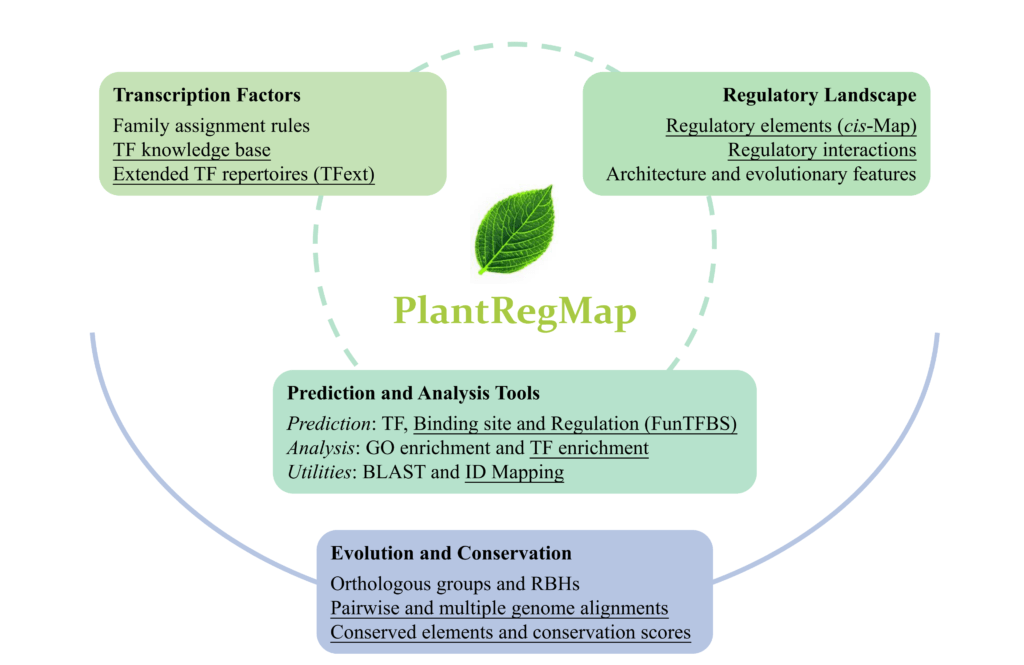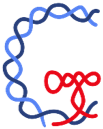On November 8, 2019, the research group of Gao Ge, a researcher at the State Key Laboratory of Protein and Plant Gene Research at Peking University, published a research paper entitled “PlantRegMap: charting functional regulatory maps in plants” in the journal Nucleic Acids Research (https://doi.org/10.1093/nar/gkz1020). The study mapped the functional transcriptional regulation map of 63 plants, providing an important resource for further exploration and understanding of the mechanism and evolution of plant transcriptional regulation systems.
Transcription factors regulate the spatial-temporal specific transcription of downstream target genes by binding to specific cis-elements, thereby precisely regulating plant development and rapid response to external stress. Systematic identification of transcription factors, regulatory elements, and interactions between them is critical to understanding the mechanism and evolution of plant transcription systems. In the previous work, the research team compiled a complete set of plant transcription factor classification rules by reading thousands of related documents. Based on this rule, 320,000 transcription factors were systematically identified and functionally annotated in the plant transcription factor database PlantTFDB. During more than ten years of development, the plant transcription factor classification rules and databases have been widely used by researchers in the plant field. The relevant websites have nearly 100 million external visits per year, and many papers have been selected into ESI Highly Cited Papers (Top 1%).
In this study, the team worked on the remaining two parts of the plant’s transcriptional regulatory map: regulatory elements and interactions between transcription factors and regulatory elements. First, they constructed a high-precision conservation map of 63 representative plants through whole genome alignments. Then, based on the consistency between the DNA binding affinity and the corresponding conservation in each point of the transcription factor binding matrix, a new algorithm (FunTFBS) was developed and was used to screen for functional regulatory interaction between transcription factors and regulatory elements. Using the conservative map and FunTFBS, they identified more than 20 million functional transcription factor binding sites and more than 2 million functional transcriptional regulatory relationships for 20,000 transcription factors in 63 species, charting the transcriptional regulatory map for the major branches of angiosperms. Finally, the team upgraded the transcription factor-centered PlantTFDB to a comprehensive plant transcriptional regulation data and analysis platform PlantRegMap (http://plantregmap.cbi.pku.edu.cn, mirror http://plantregmap.gao-lab.org), which provides an important data and analysis platform for the study and understanding of plant transcriptional regulation systems.

The framework of PlantRegMap. The newly released/updated resources are marked with underlines.
Feng Tian, Ph.D. student of the Peking-Tsinghua Center for Life Sciences, Academy for Advanced Interdisciplinary Studies of Peking University, and De-Chang Yang, Ph.D. student of the School of Life Sciences of Peking University, are the co-first authors of this paper. Dr. Ge Gao, a researcher at the School of Life Sciences of Peking University, and Dr. Jinpu Jin are co-corresponding authors. The research was supported by the National Natural Science Foundation of China and the State Key Laboratory of Protein and Plant Gene Research at Peking University.
